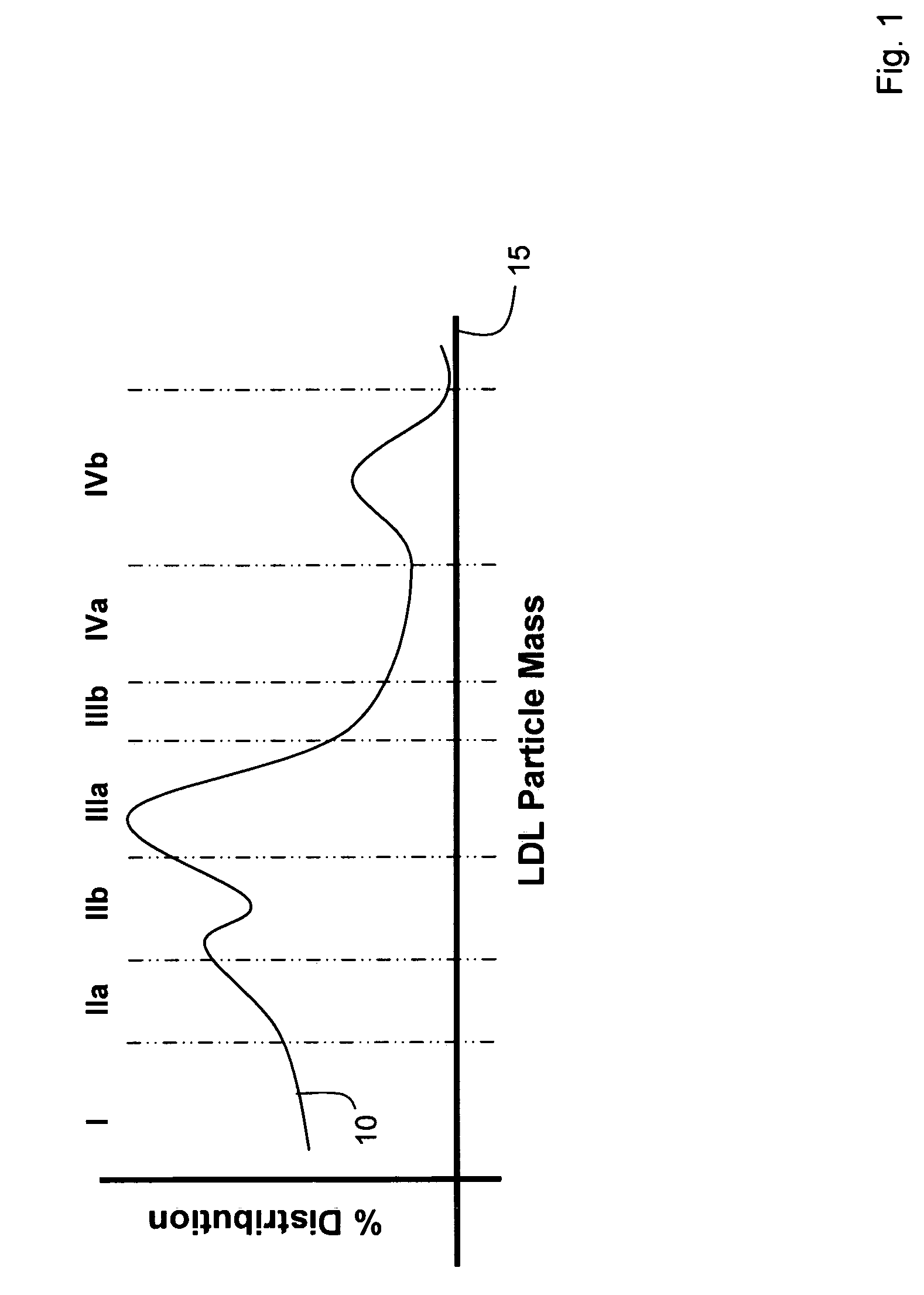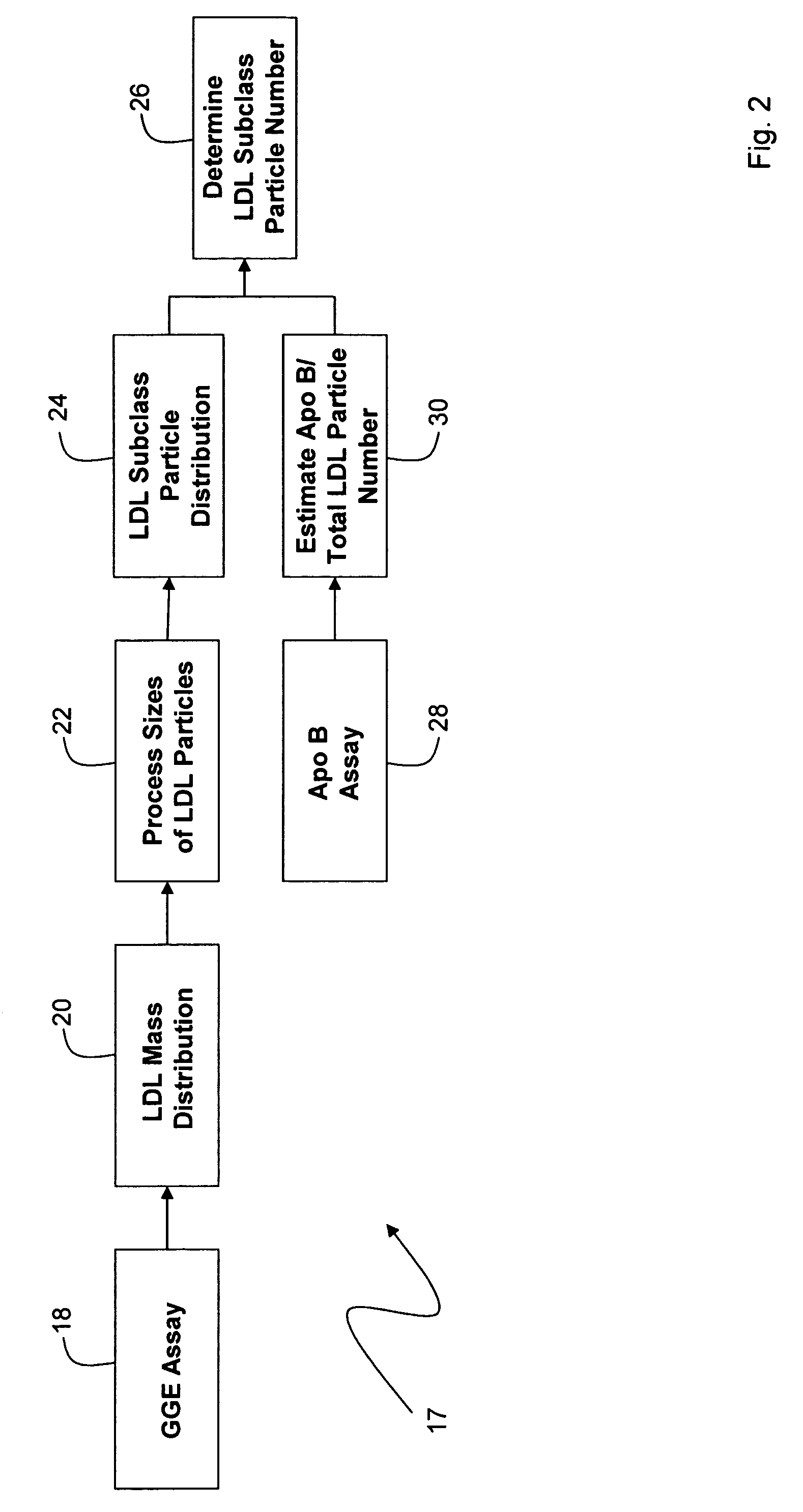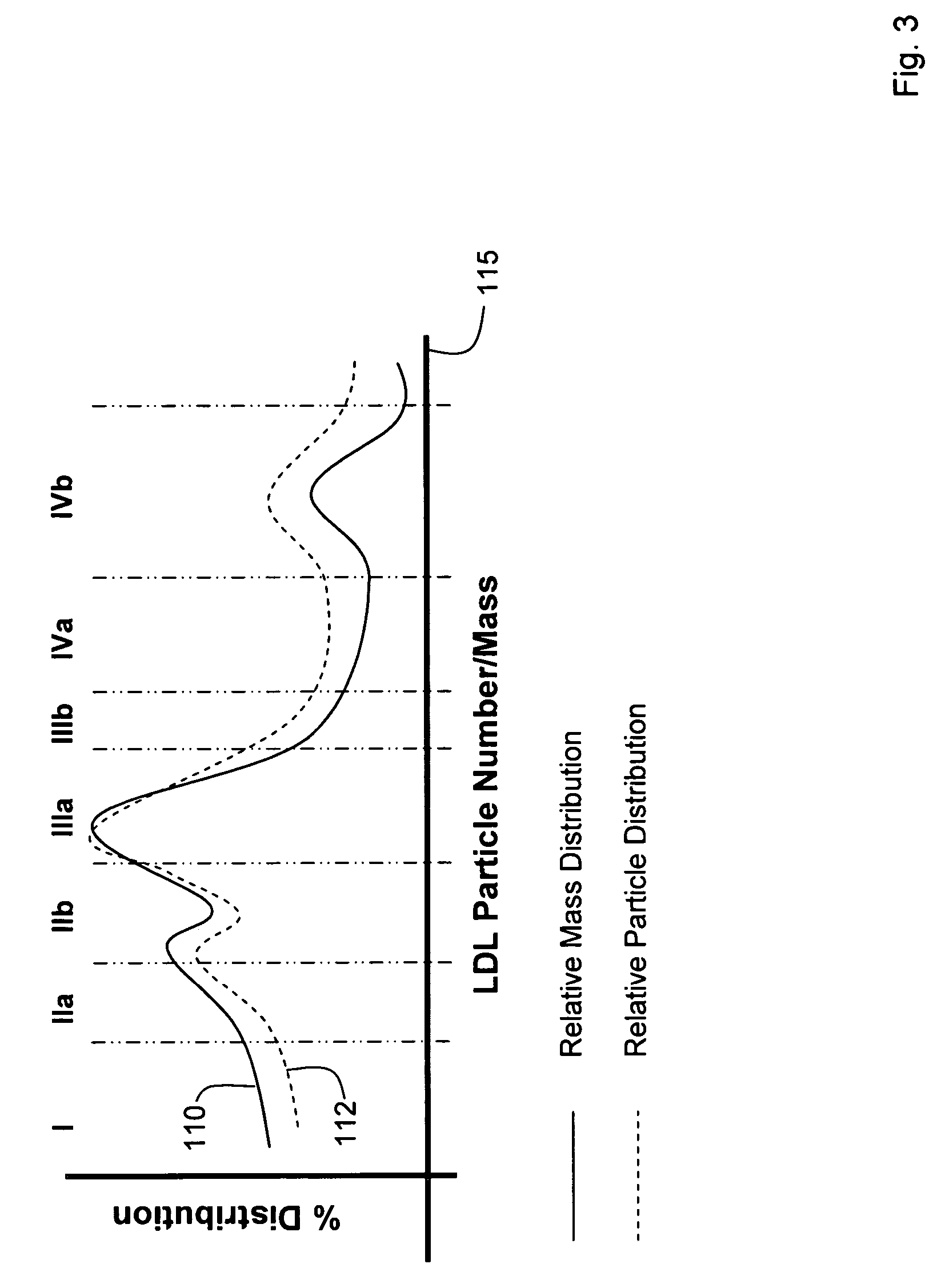Method for quantitatively determining the LDL particle number in a distribution of LDL cholesterol subfractions
a technology of lowdensity lipoprotein and subfraction, which is applied in the field of quantitative determination of the number of ldl particles in the distribution of ldl cholesterol subfraction, can solve the problems of reducing the and reducing the specific number of ldl particles. , to achieve the effect of total cholesterol and ldl cholesterol, reducing the specific number of ldl particles
- Summary
- Abstract
- Description
- Claims
- Application Information
AI Technical Summary
Benefits of technology
Problems solved by technology
Method used
Image
Examples
Embodiment Construction
[0023] Referring to FIGS. 1 and 2, a conventional GGE process separates LDL particles into subfractions according to their mass, yielding a graph 15 that shows a relative mass distribution 10. The relative mass distribution 10 is sub-divided into seven LDL subfractions classified as I, IIa, IIb, IIIa, IIIb, IVa, IVb) that vary with particle size. Table 1, below, describes for each subfraction and corresponding region the: i) upper particle diameter; ii) lower particle diameter; iii) median diameter; and iv) mean radius. These values are well established and determined using separate studies, e.g., studies involving ultracentrifugation.
TABLE 1LDL subfractions and their associated geometriesUpperLowerMedianMedianSubfractionDiameter (Å)Diameter (Å)Diameter (Å)Radius (Å)I285.0272.0278.5139.25IIa272.0265.0268.5134.25IIb265.0256.0260.5130.25IIIa256.0247.0251.5125.75IIIb247.0242.0244.5122.25IVa242.0233.0237.5118.75IVb233.0220.0226.5113.25
[0024] An algorithm 17, such as that shown in FIG....
PUM
 Login to View More
Login to View More Abstract
Description
Claims
Application Information
 Login to View More
Login to View More - R&D
- Intellectual Property
- Life Sciences
- Materials
- Tech Scout
- Unparalleled Data Quality
- Higher Quality Content
- 60% Fewer Hallucinations
Browse by: Latest US Patents, China's latest patents, Technical Efficacy Thesaurus, Application Domain, Technology Topic, Popular Technical Reports.
© 2025 PatSnap. All rights reserved.Legal|Privacy policy|Modern Slavery Act Transparency Statement|Sitemap|About US| Contact US: help@patsnap.com



